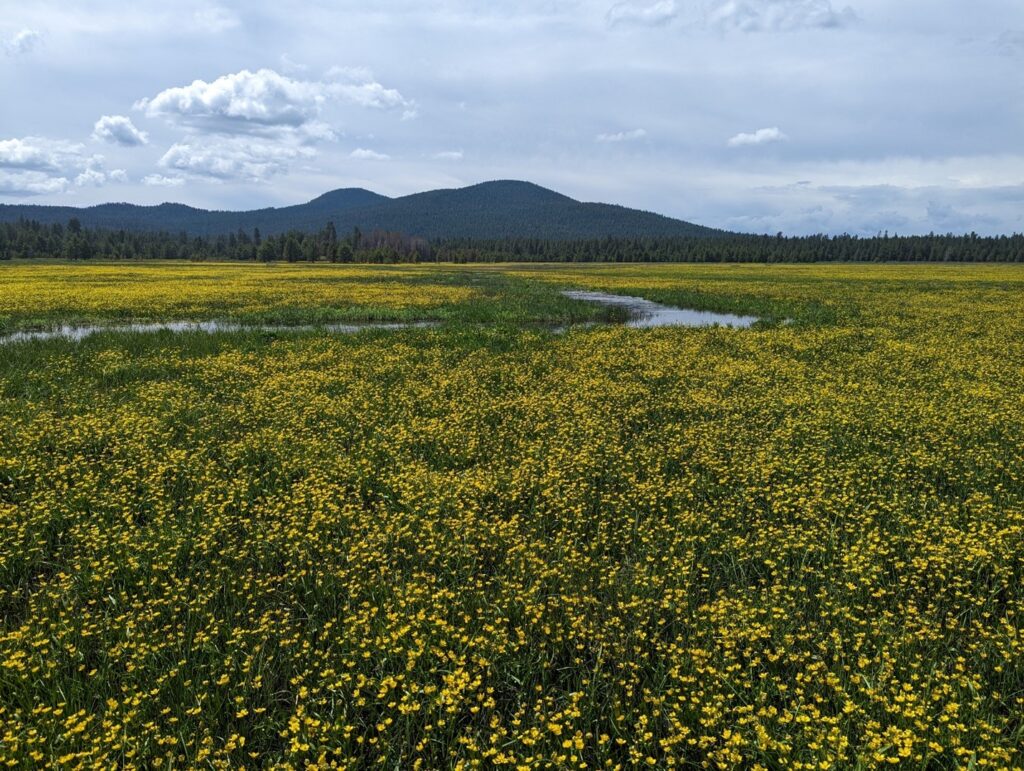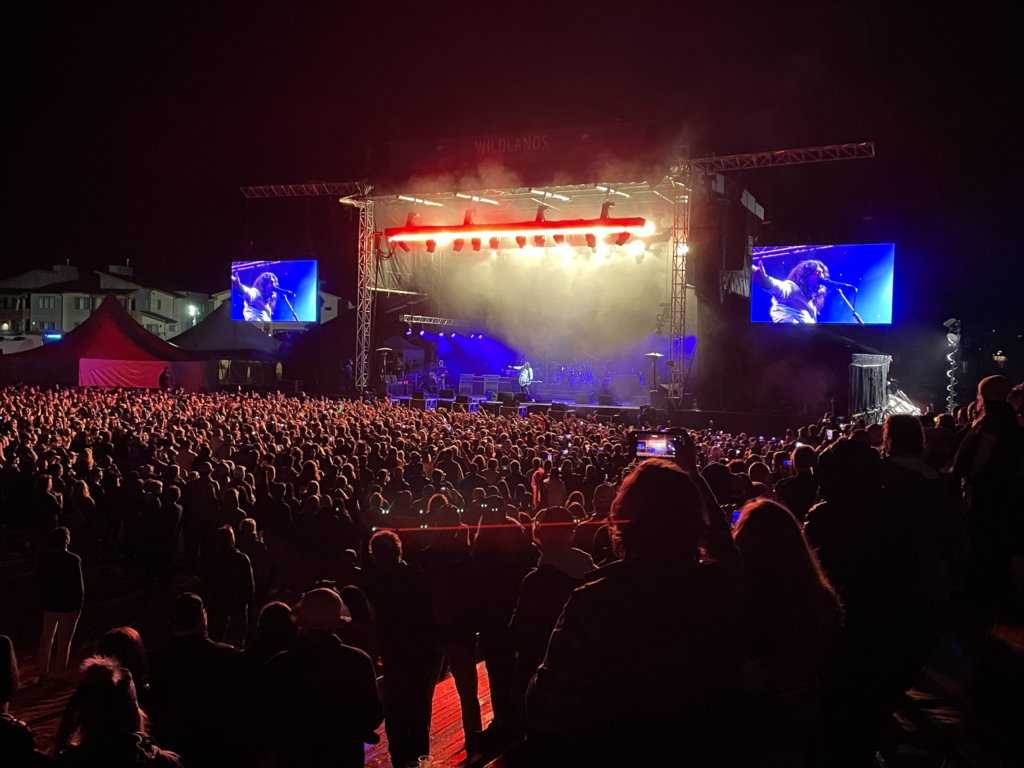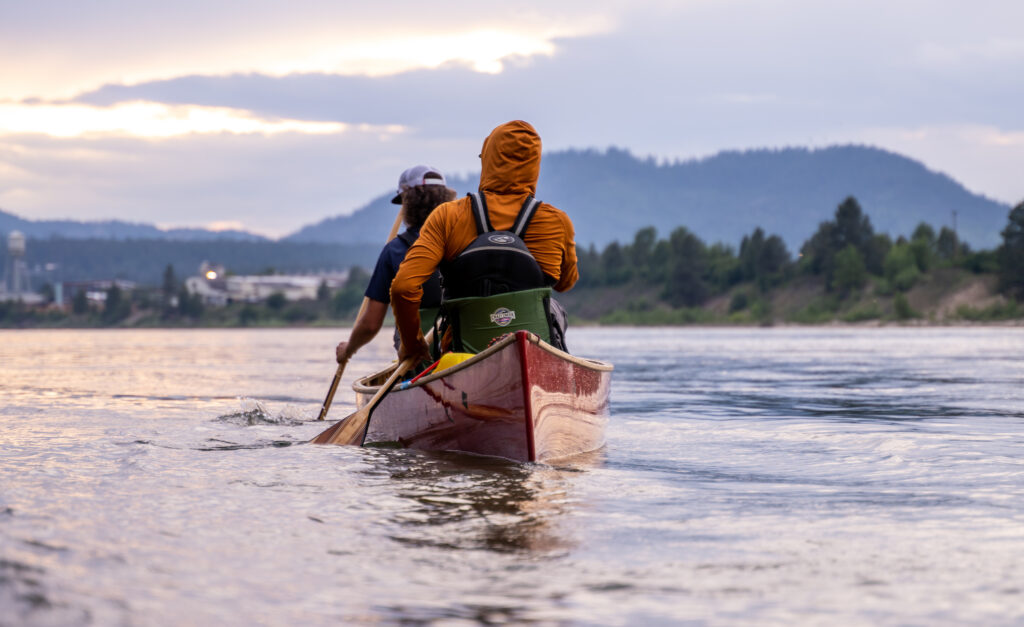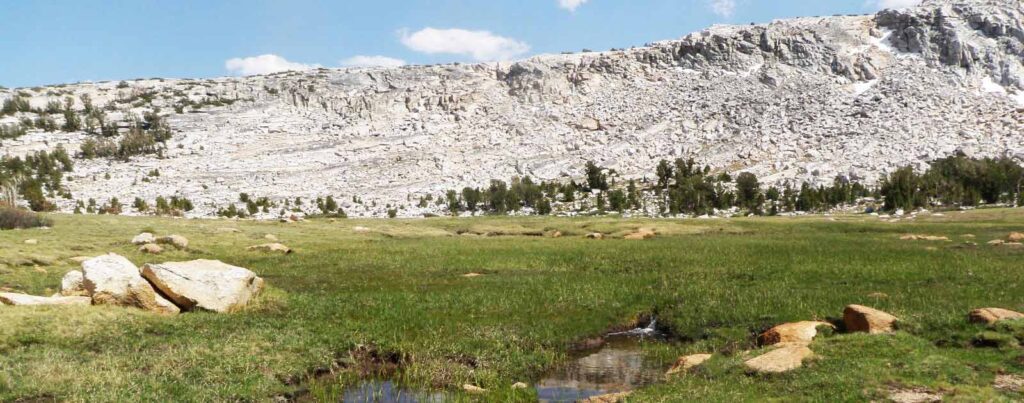
This past week I had a chance to see first-hand the connections between headwaters and drinking water that we think about a lot here at American Rivers.
I was backpacking with my family in the Vogelsang region of Yosemite National Park under clear blue skies with high Sierra meadows dominating the views and landscapes. At elevations over 10,000 feet, it is truly spectacular country where the snows usually come early and leave late. With the recent droughts in California, there were few signs of snow in late June, and we hiked through dry sections that most Junes would be wet and soggy.
Even with the dry conditions, the meadows still had a little water left to release into the small streams we were hiking near. Some of my colleagues here at American Rivers like Dr. Luke Hunt have described healthy meadows as sponges that can hold immense amounts of water to release slowly during the dry months as a way to keep the rivers flowing downstream. In our case, we were hiking at the very top of these watersheds across and beside trickles of water too small to have names. Even though they were nameless, they were beautiful and running completely clear with clean water that until recently was literally as pure as the driven snow.
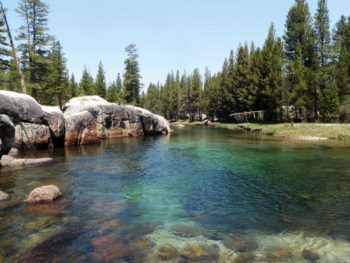
Yosemite National Park Tuolumne River, CA
As we followed those streams down from the high elevations, the sounds of the creeks grew louder as they were joined by other nameless creeks to become large enough to now have names like Rafferty Creek and Ireland Creek. My kids wanted to dunk their heads every chance they got.
We continued to hike down past where the creeks joined the Lyell Fork of the Tuolumne River in a U-shaped valley that was carved a long time ago. There were deep green swimming holes that the trout use year-round. There were undercut banks, riffles, meanders, and some long, straight sections where the water was so clear that you almost couldn’t tell it was there. And drinking this cold water kept us going through the heat of the day.
Two days later, I was down near San Francisco having dinner with some old friends (though they’d claim to not be that old). When the waiter brought our waters, it struck me that I might have hiked along this same water just a few days before. San Francisco gets its water from the same Tuolumne River that is fed by Ireland Creek, Rafferty Creek, the Lyell Fork, and then the main stem Tuolumne that flows through steep canyons before reaching Hetch Hetchy Reservoir – San Francisco’s main water supply.
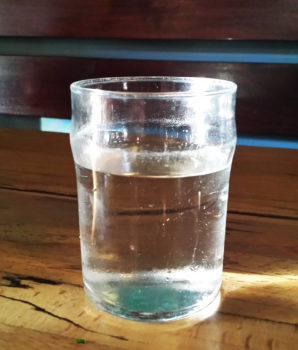
Cup of clear water at our restaurant
So with my friends there at the table, I raised my glass of clear, clean tap water to toast the meadows, creeks, and river that had brought it from those high elevations to a pizza restaurant where normally we wouldn’t think twice about it.
It was a nice way to think back to how these beautiful streams give us so much that we need and to recognize that clean water doesn’t just happen – it takes a natural, protected river system to make it happen.
